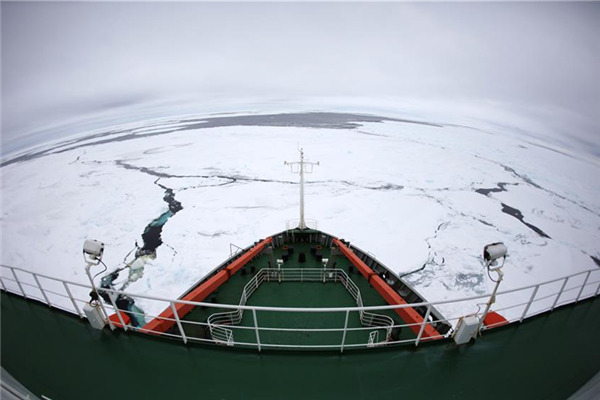Pollution: New standards, old problems
 |
|
Mikail Hansa from South Africa has a photo taken with his country's national flag at Tian'anmen Square on Aug 30, a day when the PM2.5 readings in some parts of Beijing were extremely low, at only 4 micrograms per cubic meter. Zhou Hong/China Daily |
It's still more than two months before the start of the winter heating season, during which huge amounts of coal are burned and, with ongoing efforts to relocate almost all the polluting industries outside the city, vehicle exhaust fumes have been pinpointed as a key source of pollution during bad weather.
The government has brought forward the timetable for upgrading the quality of both gasoline and diesel fuels. The move came in response to statements by environmental experts that oil-based fuels are the biggest obstacles to solving pollution caused by motor vehicles.
The government will strive to implement phase 5 of the gasoline standard - which stipulates that fuel must contain less than 10 micrograms of sulfur per gram - in a number of key areas, including Tianjin, Hebei province, the Yangtze River Delta region and the Pearl Delta region, by the end of 2015.
The previous timetable had specified the end of 2017, two years later than that stipulated by the Airborne Pollution Prevention and Control Action Plan (2013-17), which was released on Thursday.
 |
In response to concerns about the feasibility of implementing the plan on schedule, some experts said the best way to ensure a stable supply of fuel would be to introduce market-oriented reforms in the domestic fuel market.
"The government is trying to combat airborne pollution caused by vehicle emissions by upgrading vehicles, improving the quality of fuel, and building more roads with the aim of reducing traffic congestion. But currently, the biggest factor hindering progress is the scarcity of high-quality fuel. Domestically refined fuel has failed to keep up with vehicle development," said He Kebin, a professor of environmental science and engineering and the executive dean of Tsinghua University's graduate school.
In 2010, the latest figures available, vehicle emissions of nitrogen oxide nationwide were close to 5.5 million metric tons per annum, accounting for more than 30 percent of total emissions of the gas, according to The First National Pollution Census Bulletin.
Nitrogen oxides, which are toxic and one of the main causes of acid rain, are easily transformed into PM2.5 and ozone when they undergo a series of chemical reactions upon exposure to air. Both pose significant threats to human health.Nitrogenous organic particles are prevalent in smog and haze, according to a report that studied the thick haze that covered Beijing, Tianjin and Hebei province in January, conducted by a team from the Chinese Academy of Sciences.
Registration Number: 130349



























